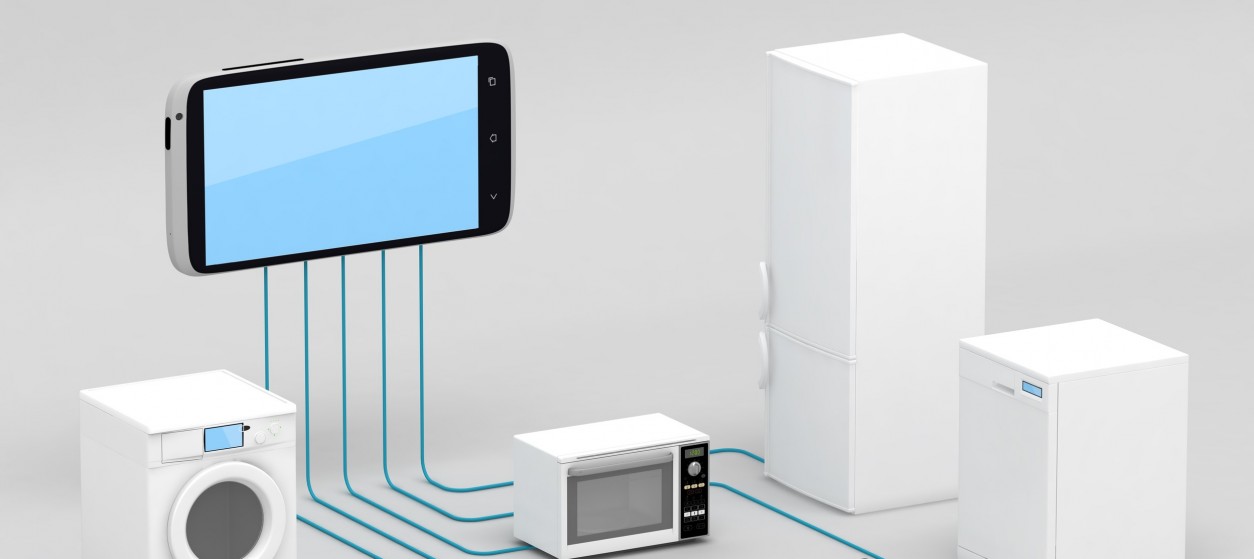For over two decades we are witnessing an explosion of the number of internet connected objects, which are the main enablers of the Internet of Things (IoT) computing paradigm. The latter enables collection and analysis of data from internet connected devices, as a means of deriving insights about physical processes in areas such as trade, healthcare, logistics and industry. In several cases these insights become actionable and give rise to automation and control processes (e.g., changing the configuration of machines) as a means of controlling the flow of physical processes.
From a technology viewpoint, most IoT applications are cloud-based, as cloud computing provides compelling advantages for storing and processing large amounts of data. However, it’s well known that classic cloud computing falls short when it comes to supporting IoT applications that involve real-time and/or low-latency interactions with the field (e.g., real-time detection of defects in a production line) given that interacting with the cloud is quite susceptible to delays.
Edge Computing Revisited
Edge computing is a variation of cloud computing that enables effective handling of low latency interactions close to the field, as is commonly the case with most industrial actuation and control applications. Edge computing introduces additional layers of data and services processing between the cloud and the field. These layers are typically implemented through edge nodes hosting functions that:
- Perform ultra-low latency tasks close to the field, where devices and their data are accessed through a high-speed local area network.
- Help economizing bandwidth and storage as data can be filtered prior to being transmitted and stored in the cloud. This results in the transmission and storage of less information.
- Safeguard privacy and data protection for sensitive datasets, as they can be stored at the edge rather than transmitted to the cloud.
Based on these functionalities, edge computing architecture represents the primary architectural choice for IoT applications, since it combines the capacity and scalability benefits of cloud computing with the low-latency and data protection advantages of edge processing. This is the reason why edge/cloud computing is prescribed in most standards-based architectures for IoT systems, such as the reference architecture of the Industrial Internet Consortium.
During the last couple of years, edge computing deployments are increasingly required to accommodate the mobility of smart objects such as robots and drones. The autonomous operation of smart objects and their collaboration in the scope of field tasks (e.g., collaborative pick and pack processes in a warehouse) requires low-latency coordination across mobile objects and is supported by a specific version of edge computing that is called MEC (Multi-Access Edge Computing).
Introducing Multi-Access Edge Computing
MEC is a novel network architecture concept that makes provisions for controlling and executing applications close to the cellular customer. It is a standard architecture, as MEC implementations adhere to the MEC standard that has been developed by the European Telecommunications Standards Institute (ETSI). MEC enables a new ecosystem of mobile networked services, which addresses the needs of multiple actors including:
- Mobile Network Operators (MNOs) who can deploy MEC in order to economize bandwidth in their core networks, while at the same time charging content providers and application developers for the network resources that they use. MEC provides also opportunities for the development of novel services that can help MNOs differentiate themselves from their competitors, while at the same time providing new revenue streams. For example, MNOs can offer industrial automation applications based on multiple drones and robots to their enterprise customers, as a unique value proposition that is not provided by their main competitors.
- Application Developers that can develop, integrate and deploy novel services over the infrastructures of the MNOs, including applications that can benefit from direct access to radio access networks. MEC offers application developers with access to networked resources that are close to the field, through proper APIs and microservices that align to the mainstream agile approaches to services development.
- Content Providers who can develop and deploy novel content and data-intensive services over networking infrastructures, such as content delivery networking applications. Content providers can benefit from routing content to appropriate subscribers in a way that economizes bandwidth and reduces the costs that are associated with their efforts to deliver content at scale.
- Mobile subscribers and end-users of edge computing applications, which benefit from access to low latency applications with strong privacy and data protection issues. For example, users can benefit from access to Augmented Reality and Virtual Reality applications that require typically low-latency interactions in order to be delivered to mobile devices.
One of the main innovations of MEC deployments is that they allow application developers and content providers to access the Radio Access Network (RAN) of MNOs, which enables the development of ultra low latency applications. However, this presupposes that application developers and content providers are authorized to access the RANs i.e. that there are trusted third parties.
MEC Infrastructure Services
A MEC infrastructure provides a range of services that optimize resources and facilitate application development. These services include:
- A service registry that provides information about MEC applications and application platform services based on appropriate Application Programming Interfaces (APIs). Like in most edge/cloud computing deployment, a registry is a key element of the system’s dynamicity and flexibility, as it keeps track of services and application as they are made available or unavailable within the MEC infrastructure.
- A set of Radio Network Information Services (RNIS) that facilitate access to information about users and cells of the radio networks. RNIS enable access to information about the location of the subscribers and their terminals.
- A series of traffic management functions that enable routing and prioritization of data streams according to specific policies. These functions can ensure that edge traffic stays to the edge servers, while cloud traffic is routed to the cloud.
- Application programming interfaces (APIs) that enable developers to produce novel applications through proper management of the location, radio access and device mobility information i.e. information that enables developers to identify the context of their application.
MEC provides market opportunities for equipment and solution vendors, which can develop novel internetworking devices that implement the MEC standard. Such devices could be deployed within MNOs infrastructures as a means of enhancing the services offered to their enterprise or retail customers. In principle, MEC deployments can offer today some of the features that are currently anticipated as part of the next generation of mobile communications (5G), which will make provisions for supporting mobile smart objects in ultra low latency scenarios, while also offering APIs for developers wishing to leverage such opportunities. As such, even though MEC deployments are in their infancy, we expect them to proliferate during the next couple of years.










